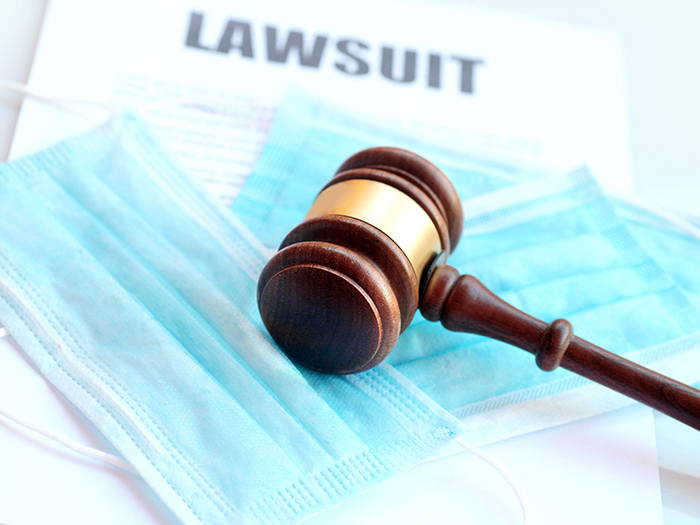Worker Lawsuit Against OSHA Puts Added Focus on Workplace Safety Amid Pandemic

Since it was founded in 1971, OSHA has been considered a bastion of worker safety. Now, some are alleging that the organization is failing to protect workers from the COVID-19 pandemic.
A group of three meat packing workers is suing OSHA after they say the agency’s failure to act on their report of hazardous working conditions put their health and safety at risk, according to the Washington Post.
The workers, who are employed by Maid-Rite Specialty Foods, filed the suit in a Pennsylvania federal district court on July 23.
The suit is based on a complaint that the plaintiffs’ attorneys filed with OSHA on behalf of the workers which accused Maid-Rite of failing to provide adequate personal protective gear and failing to adhere to social distancing guidelines on the processing lines, among other safety violations.
The Lawsuit
OSHA received the complaint about workplace safety at Maid-Rite back in May. It alleged that workers worked elbow-to-elbow with their colleagues on the production line and that they’d only been given masks three times.
Maid-Rite Specialty also failed to notify employees of infections and gave workers incentives, including bonuses, if they didn’t miss days, the complaint claims.
A day after OSHA received the complaint, an area director for the organization wrote to Maid-Rite and requested that they investigate the concerns. They noted in that communication, however, that “OSHA does not intend to conduct an on-site inspection in response to the subject complaint at this time,” the Washington Post reports.
The workers say that safety hazards persisted at the company through June and that they sent three follow-up letters to OSHA to document their concerns.
OSHA says that their complaint is still under investigation, that they’re in the process of conducting an inspection and the complaint remains open on their website. The agency has six months to complete the inspection.
The lawsuit argues that the 1970 law that created OSHA allows workers to attempt to force OSHA into action by bringing legal action against the secretary of the Labor Department.
The attorneys who filed the suit say that it will serve as another test of whether OSHA can be held accountable in court.
“This is because of the federal government’s failure to step in here,” David Seligman, executive director of the worker legal group Towards Justice, told the Washington Post. Seligman is one of the lawyers who filed the workers’ lawsuit.
“We hope that the lawsuit spurs OSHA into action for these workers. Every day they go to work, they’re in imminent danger. If the virus were to enter the facility, there’s every reason to believe that it could cause death.”
Workers’ Comp Takeaways
This is not the first time OSHA has come under fire over COVID-19 safety protocols.
In May they were sued by AFL-CIO, the country’s largest organization of labor unions. AFL-CIO was trying to force the agency to issue and enforce stronger safety regulations in the face of COVID-19. The suit was dismissed in June.
Of 7,943 coronavirus-related complaints since July 21, the agency has issued four citations, according to the Washington Post.
OSHA has declined to issue emergency regulations in relation to the pandemic. If they did, companies would have to enforce national safety standards for dealing with the COVID-19, or risk penalties.
OSHA isn’t the only organization facing complaints and lawsuits over the ways they’ve managed worker safety during COVID-19, however. Walmart, McDonald’s and Amazon are all facing suits alleging that they failed to protect workers from the virus.
In some cases, including the suit against Amazon, plaintiffs are seeking injunctions that would require companies to comply with public health guidelines, rather than monetary relief.
Employers looking at these suits should be critical of their own safety practices. If employees are sick or experiencing symptoms, encourage them to stay home. For employees in the office, make sure to adhere to social distancing guidelines and provide adequate PPE. New technologies can also help track and reduce the virus’s spread. &










